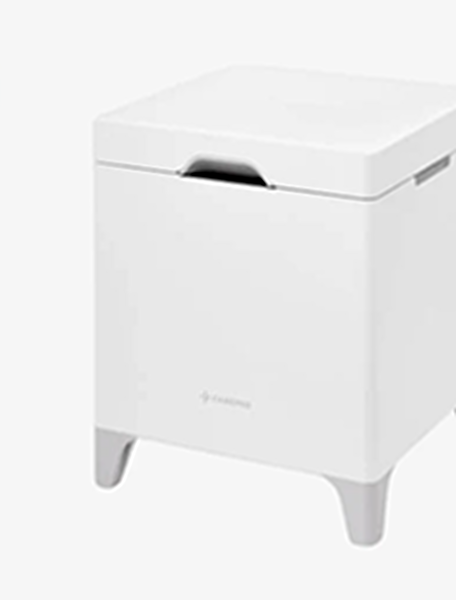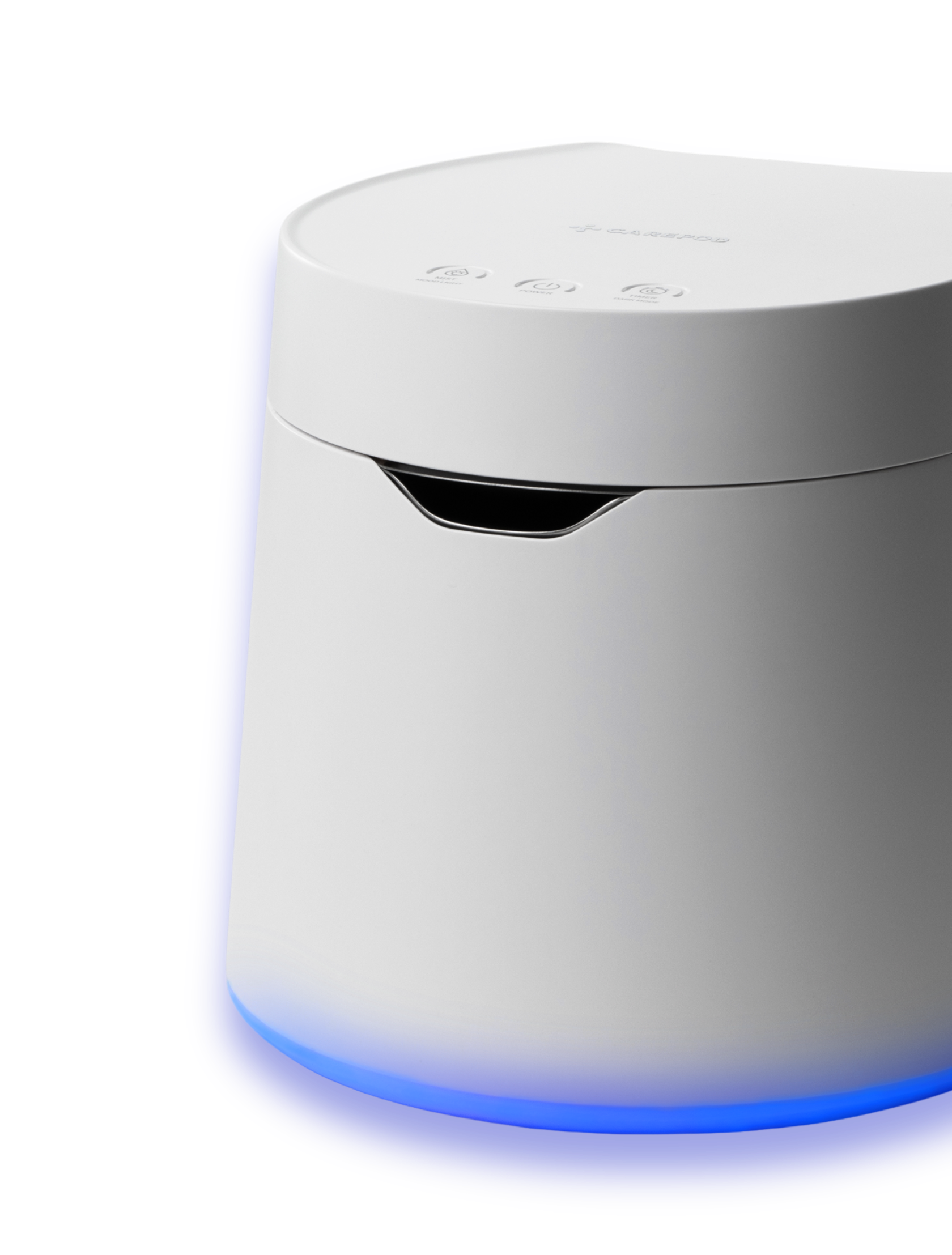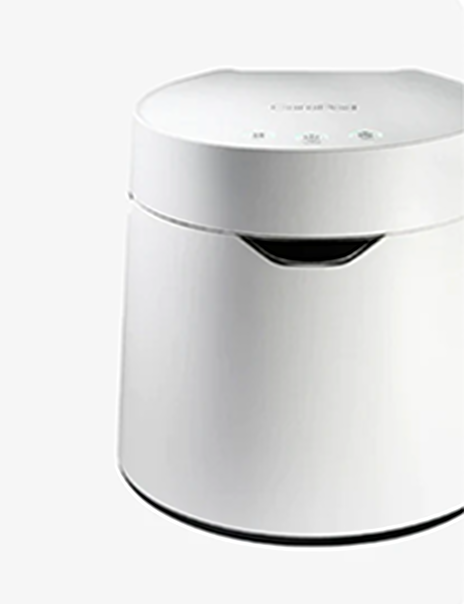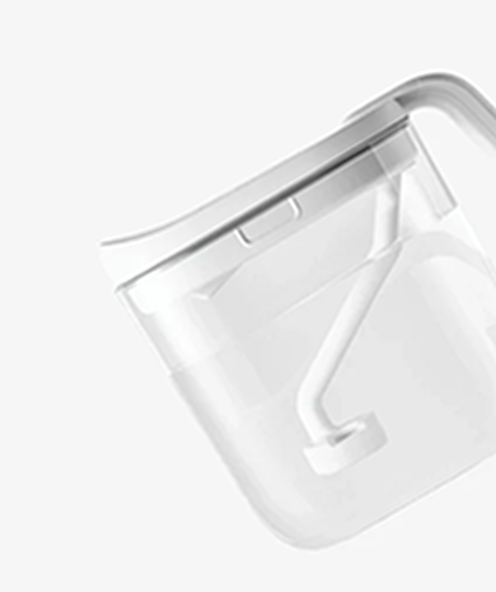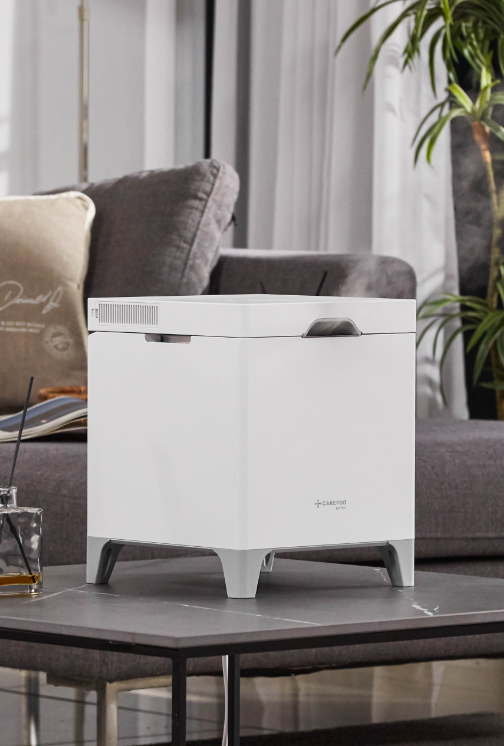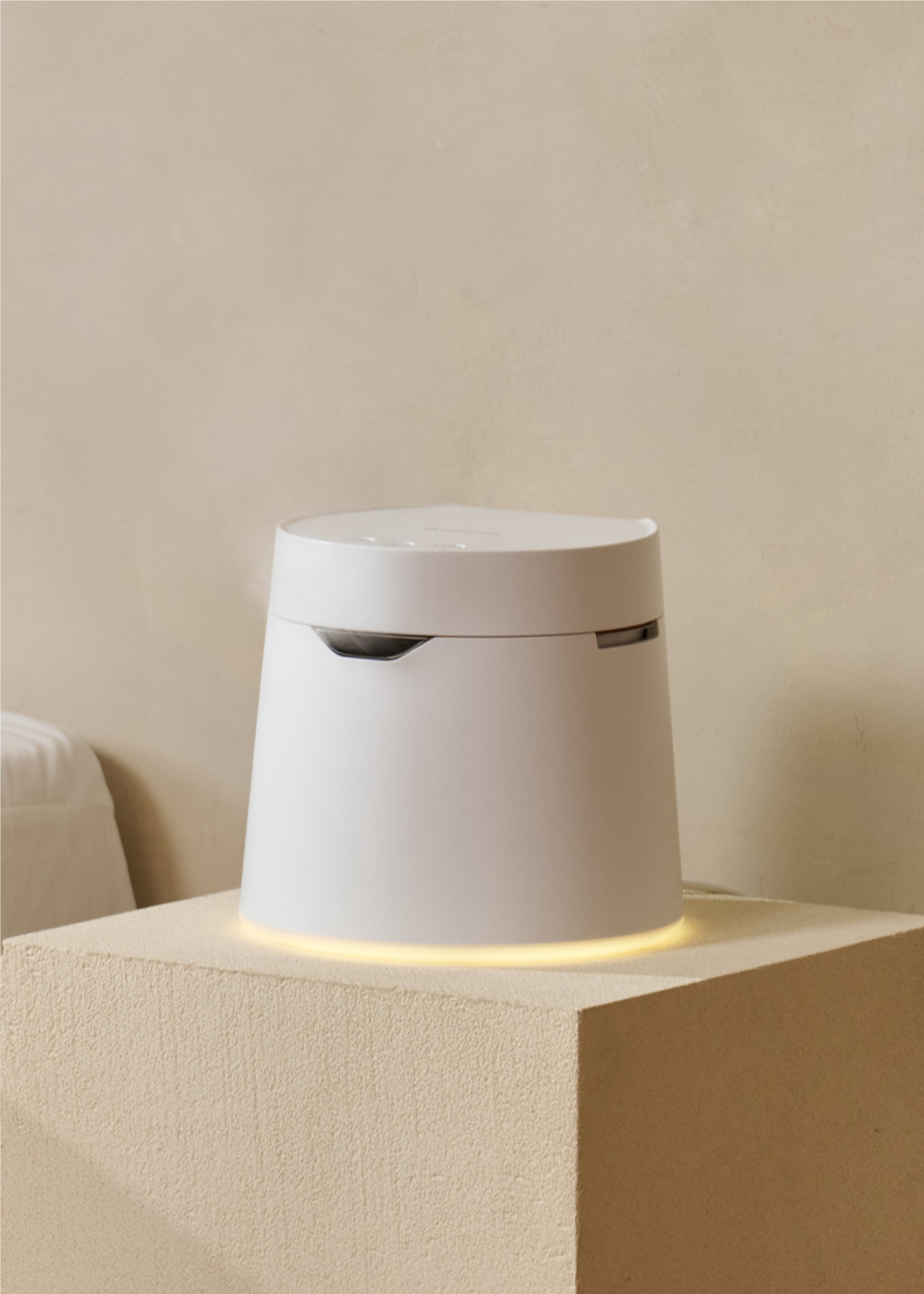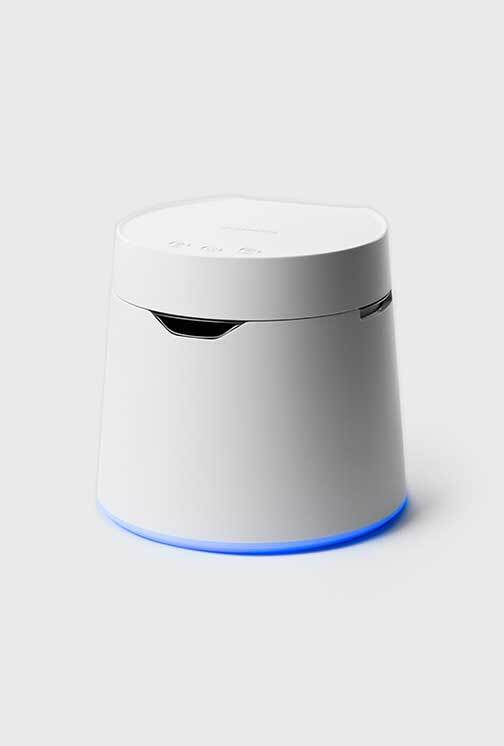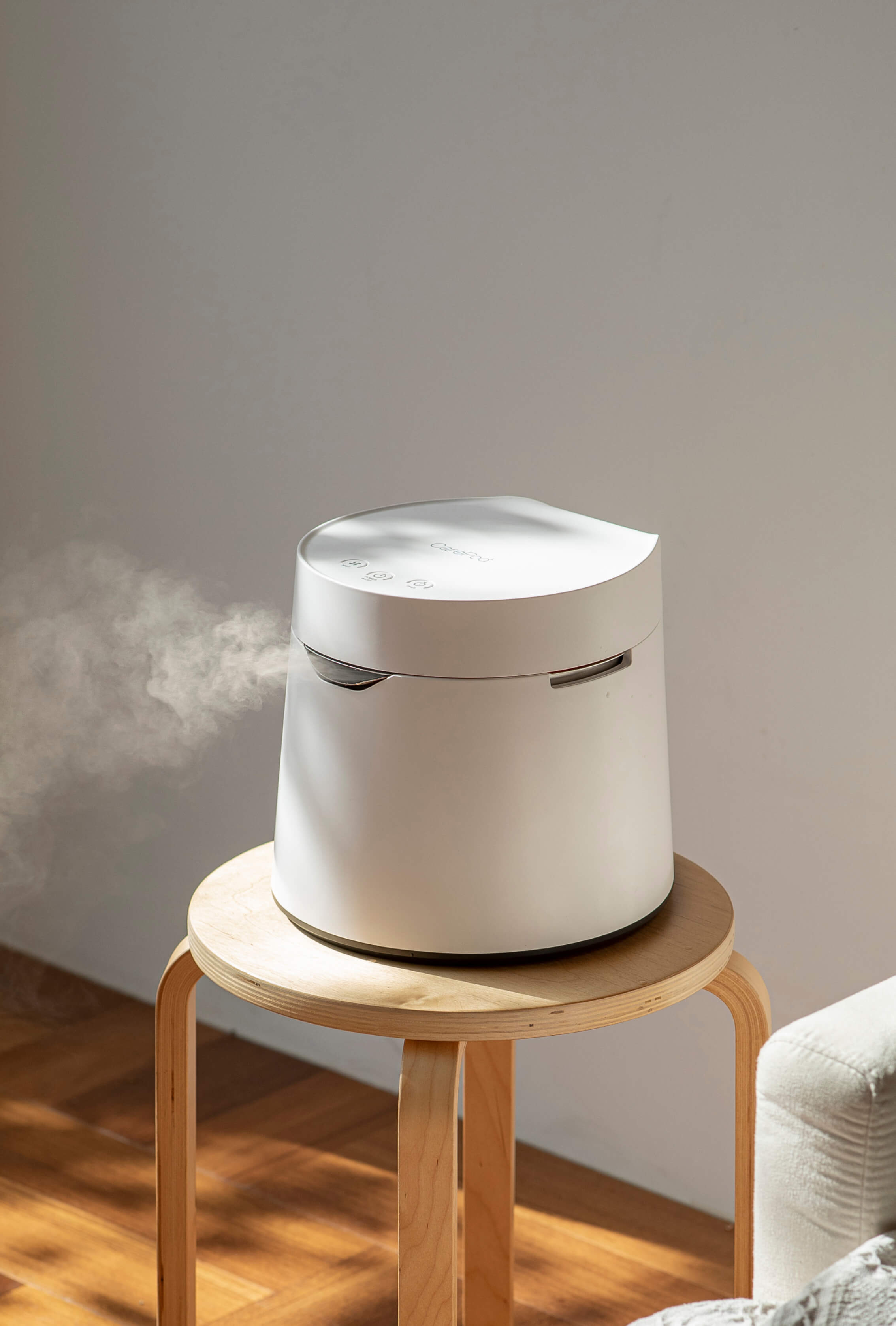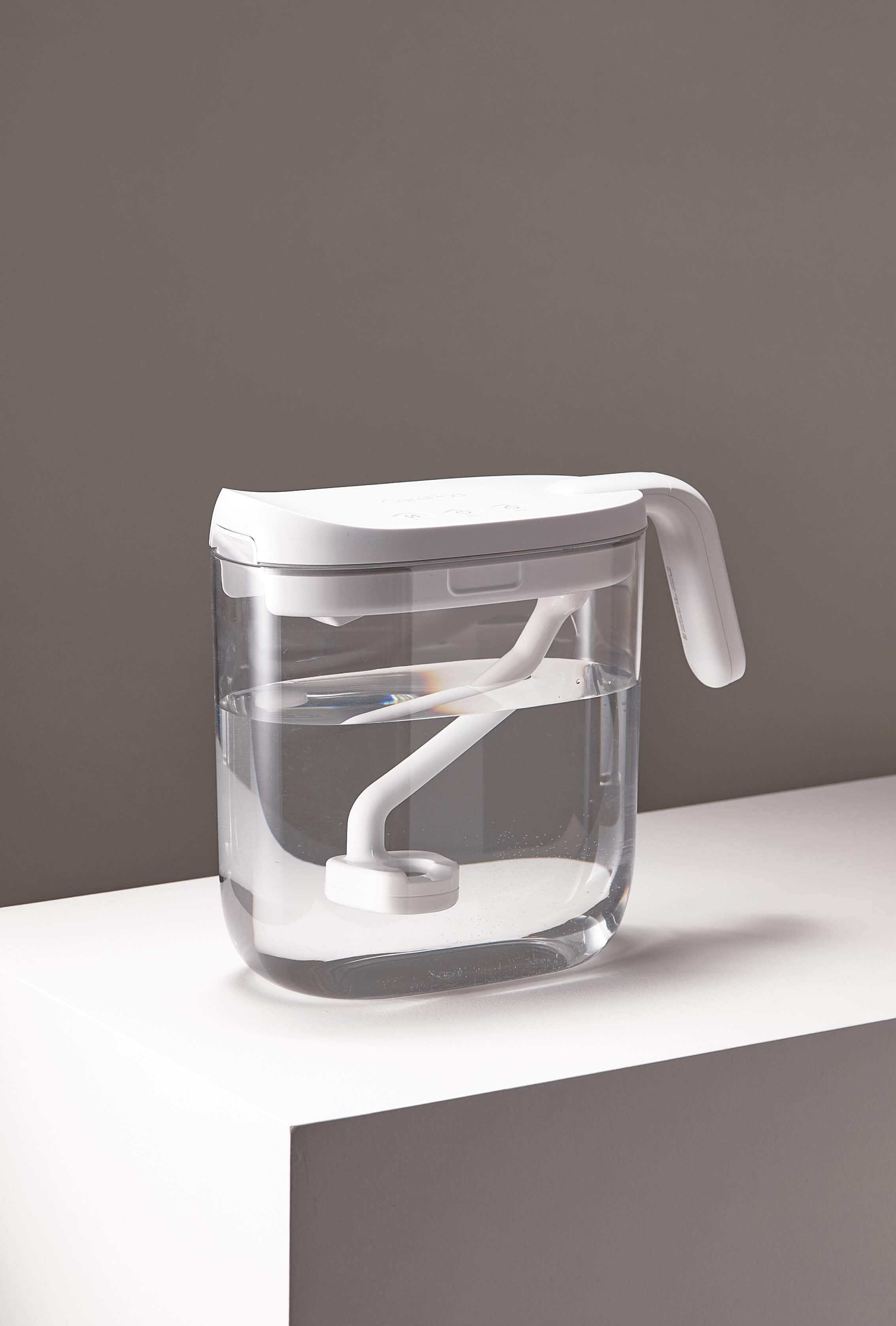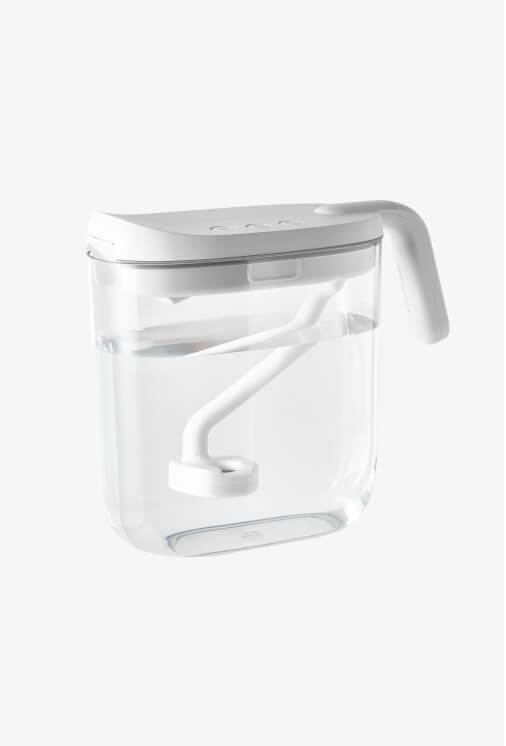Ultrasonic Humidifiers: Everything You Need to Know

While all humidifiers add moisture into the air and can serve great benefits for your health and your home, they may do so in different ways. There are four main types: the ultrasonic humidifier, evaporative humidifier, steam vaporizer, and whole-home humidifier.
So if you're looking into buying an air humidifier and might be a little confused about all the different labels and names. Well, we're here to help!
In this series, we'll overview the different types of humidifiers, starting with the ultrasonic. Along the way, we'll detail how the device works, overview pros and cons, provide cleaning and maintenance tips, and answer some important frequently asked questions.
How It Works
Ultrasonic humidifiers consist of a water tank and a diaphragm, or vibrating element. The diaphragm oscillates rapidly, sending high-frequency ultrasonic vibrations that break up the water into microscopic droplets. These tiny particles, about 1-5 microns in diameter, are then released by the device and evaporate into the air as mist, providing humidity for your surroundings.
Unlike steam humidifiers, ultrasonic humidifiers do not rely on heating, so they typically come in the cool-mist variety. However, some ultrasonic models may offer both cool-mist and warm-mist settings. And unlike their evaporative counterparts, they don't use a fan, so there is little-to-no operating noise.

Benefits
Ultrasonic humidifiers are energy-efficient, using very little electricity compared to other types of humidifiers. Thanks to the simple operating mechanism, these devices are typically small, light, compact, and sleek in structure, not taking up too much space and easily portable. Some even have cool features like LED lights and other unique designs.
ultrasonic humidifiers don't boil water or generate significant amounts of heat, they do not present the burn risk to children and pets that steam vaporizers do. They also work with a low operating noise — a quiet background humming sound as opposed to the rumble of fan as with an evaporative humidifier, which can be a nighttime nuisance.
Also unlike evaporative models, ultrasonic humidifiers don't require a filter, so you don't have to worry about regular cleaning of mineral buildup or the recurring cost of replacement filters.
Drawbacks
While efficient and convenient, sanitation is a major concern for most conventional ultrasonic humidifier models on the market. Since the water is not boiled or filtered by the device, any contaminants from the reservoir will be expelled into the air along with the water droplets. In fact, if you use tap water, which may contain mineral content and other particles, the inside of the machine may become clogged up with mineral deposits and may discharge a white dust that collects on nearby surfaces. This mineral residue could be damaging to surfaces and even dangerous to you if inhaled. Worse yet, if the water and insides of the humidifier aren't clean, bacteria or mold could be dispelled into the air, which could be harmful to the device itself and even spread disease.
While ultrasonic humidifiers are extremely effective at adding moisture to the air, they can sometimes be too powerful for their own good, believe it or not! There's always a risk of over-humidification, and too much dampness can cause problems like mold growth and general discomfort. If your humidifier doesn't come with a built-in humidistat feature, be sure to buy one in order to know when the humidity level is too high and when to turn the device off.
Finally, ultrasonic technology generally makes for the most expensive type of portable humidifier upfront, although prices may vary significantly based on size, brand, model, and other factors. Again, however, there is no recurring cost from replacement filters.

How To Clean and Maintain
While dirty humidifiers can cause all kinds of trouble, caring for your appliance properly can help reduce health risks and other adverse effects.
For one, be sure to use clean water — ideally distilled or purified — instead of tap water, which may contain mineral content, bacteria, and other contaminants that are carried by the water droplets into the air. Replacing this water should be a daily routine.
According to the EPA, you should be sure to thoroughly clean your portable humidifier every three days. "Empty the tank and use a brush or other scrubber to clean it. Remove any scale, deposits, or film that has formed on the sides of the tank or on interior surfaces," they advise. One common cleaning method is to rinse the inside with lukewarm water and use white vinegar or bleach as a disinfectant. However, avoid using detergents or other abrasive cleaning agents, which can damage the inside of the device.
Also keep in mind that not all humidifiers are the same, so when possible, refer to cleaning instructions that come with the product.

Carepod: Solving the Biggest Problem With Ultrasonic Humidifiers
When it comes to ultrasonic humidifiers, hygiene is the number one issue. They're known for being a hassle to clean, and oftentimes, following the ins and outs of complicated instruction manuals still doesn't get the job done.
Carepod was created with the goal of not only simplifying the cleaning process, but also making it more effective. With a patented, award-winning three-piece design that allows for revolutionary ease of cleaning, Carepod is made with premium grade stainless steel and has been described as the world's most hygienic humidifier. Unlike most humidifier models, the parts that need to be disinfected — the vibrating element, water tank, and cover — can all be easily taken apart, washed safely in boiling water to eliminate bacterial growth and mineral deposits, then intuitively reassembled afterwards. The device has achieved remarkable 99.99% sterilizability in research trials, higher than that of any leading brand.

FAQ
Still have questions? Here are the answers to a few that people commonly ask:
- How do I tell if my ultrasonic humidifier is working?
There should be a visible mist and gentle hum coming from the humidifier. If you suspect that the device is broken, turn it off and try to fix the issue before continuing to use it.
- When should I turn on my humidifier?
Any time, day or night, when you're at home is fine. Turn off the humidifier when you're away from the house and when the humidity level reaches close to 60%, as between 30% and 50% is the ideal indoor range.
- What are the benefits of using a humidifier?
By adding moisture into the surroundings, air humidifiers may be able to help with health issues such as dry skin, congested nasal passages, eyes/nose/throat irritation, and other common cold and allergy symptoms. Humidifiers can also improve your overall home environment, serving benefits for your plants, pets, and furniture.
Final Thoughts
At the end of the day, the best type of humidifier is the one that best suits your needs and preferences.
To summarize, ultrasonic humidifiers work by using a ultrasonic vibration device to break water up into droplets and dispel these particles into the air as mist. They're small, compact devices that are energy-efficient, safe for children, produce a quiet humming noise, and do not require filter replacements. However, ultrasonic humidifiers may cause adverse effects if not disinfected well or left unattended for too long, though these issues can be resolved through proper cleaning and monitoring.
To learn more about different humidifier types, check out the rest of our series...
